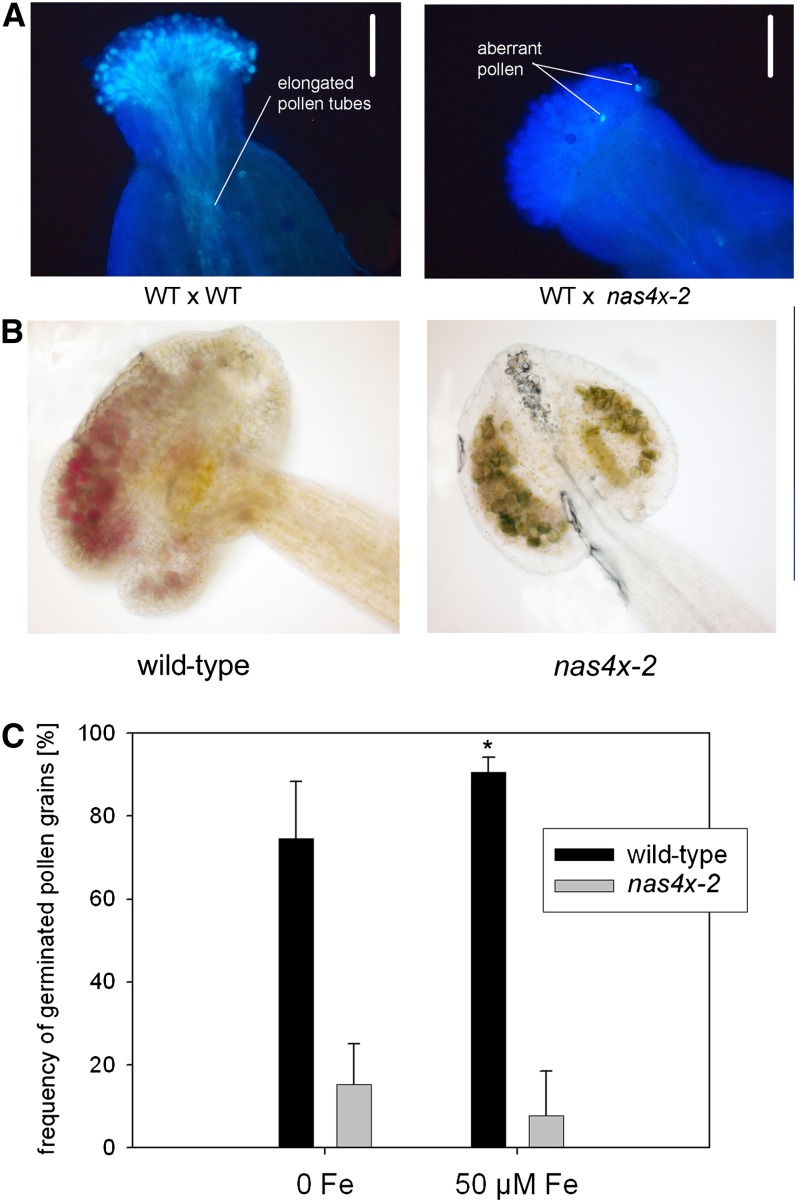Figure 8.
nas4x-2 Pollen Development and Viability Were Strongly Affected in nas4x-2 Plants.
(A) In vivo pollen germination after pollination of wild-type (WT) carpels, showing that wild-type pollen produced elongated tubes (wild type × wild type), while nas4x-2 pollen was not able to germinate in vivo (wild type × nas4x-2). Pollen germination was visualized by aniline blue staining. Note that only a few pollen grains were produced by nas4x-2 and that the aberrant nas4x-2 pollen phenotype was only observed when pollen was produced in fully homozygous nas4x-2 plants. Bars = 500 µm.
(B) Alexander staining of pollen in anthers, showing that nas4x-2 pollen was mostly nonviable. Viable pollen grains stained dark violet, while nonviable pollen grains were grayish-pale turquoise.
(C) In vitro germination assay of pollen in the absence and presence of 50 µM Fe sulfate, showing that the frequency of nas4x-2 pollen germination was strongly reduced and could not be rescued by Fe supply, while wild-type pollen germination was increased in the presence of Fe (error bars are sd; n = 5; *P < 0.05 for the comparison 50 µM Fe versus 0 Fe; not indicated P < 0.05 for the comparison nas4x-2 versus the wild type).

